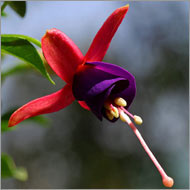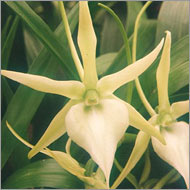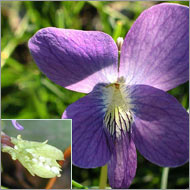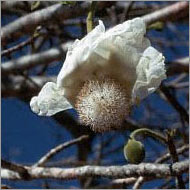
Pick the Pollinator
PRINTABLE QUESTIONS PAGE
Flowering plants represent about one-sixth of all Earth's
known living life-forms and are important to the survival of
most other species. But how did these immobile organisms
manage to spread so far? One answer is pollination, or plant
sexual reproduction. Pollinators—typically wind, water,
and animals—carry pollen from one flower to another,
where fertilization takes place. Below, match seven plants
with their pollinators and, when you're done, check our
answers page
and learn some of the reasons why flowering plants have come
to dominate the botanical world.—Rima Chaddha
For more information on flowering plants and how they work,
check out
Flowers Modern & Ancient.

INSTRUCTIONS
After you print this page out, match the pollinators shown
above with the plants they pollinate (below). Note there is
only one correct choice for each plant. Write your answers in
the space provided.


|
|
Hardy fuchsia
Attracted to the fuchsia's bright red sepals and purple
petals, this pollinator can visit hundreds of flowers
each day, making it very important to the plant's
reproductive cycle. Fuchsia flowers hang downward and
serve as an ideal food source for this pollinator by
offering great quantities of nectar.
Hint: While most pollinating insects are blind to
the color red, this organism sees red objects
particularly well.
Answer: ____________________________
|


|
|
Canada goldenrod
With its bright yellow petals, abundant nectar, and
protein-rich pollen, goldenrod attracts a variety of
pollinators, including one of the above. This organism
is equipped with "pollen baskets" on its hind legs, and
it uses the goldenrod's nectar to create a sweet,
viscous liquid often prized in folk medicine as an
antiseptic agent.
Hint: Farmers often utilize this easily bred
organism in pollinating commercial crops such as
almonds.
Answer: ____________________________
|


|
|
Comet orchid
Nicknamed for its appearance, the comet orchid has a
milky white flower and a long "tail" consisting of a
spur that holds the flower's nectar. While scentless by
day, the orchid flower becomes fragrant at night,
attracting this nocturnal pollinator.
Hint: Only a very specialized pollinator can
reach this flower's nectar.
Answer: ____________________________
|


|
|
Common blue violet
The common blue violet has a variety of insect
pollinators, but there is one other species that helps
the plant procreate and even stretch beyond the insects'
usual habitats.
Hint: The open "bud" pictured here is more
important than you might think. What's going on here?
Answer: ____________________________
|


|
|
Wild celery
Despite its name, wild celery bears little resemblance
to the leafy vegetable you buy at the grocery store. In
fact, while the celery we eat depends upon insects for
pollination, wild celery takes an entirely different
approach to reproduction: it utilizes its natural
habitat to scatter its pollen.
Hint: Wild celery is a natural food source for
many animals, including the canvasback diving duck.
Answer: ____________________________
|


|
|
Sumatran corpse flower
Standing at up to 20 feet tall and stretching 16 feet
across, the Sumatran corpse flower is easy for most
pollinators to spot, but the plant's scent is what draws
these organisms in. The corpse flower's "perfume" is so
important in attracting pollinators that the plant will
even chemically heat up to about human body temperature
in order to help release its scent.
Hint: The corpse flower's perfume is said to
resemble the odor of rotting flesh, hence its name.
Answer: ____________________________
|


|
|
African baobab
These sweetly scented, light-colored flowers bloom in
the late afternoon and evening, just in time to attract
this nocturnal pollinator. As with the fuchsia, the
baobab's flowers hang downward and are shaped to fit the
pollinator's facial structure.
Hint: This beakless pollinator uses its tongue to
probe the flower for nectar.
Answer: ____________________________
|
Answers
|


We recommend you visit the
interactive version. The text to the left is provided for printing purposes.
|


|
|
First Flower Home |
Send Feedback |
Image Credits
|
Support NOVA
|
© | Created
March 2007
|
|









